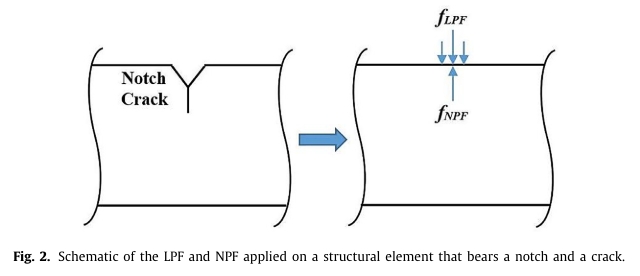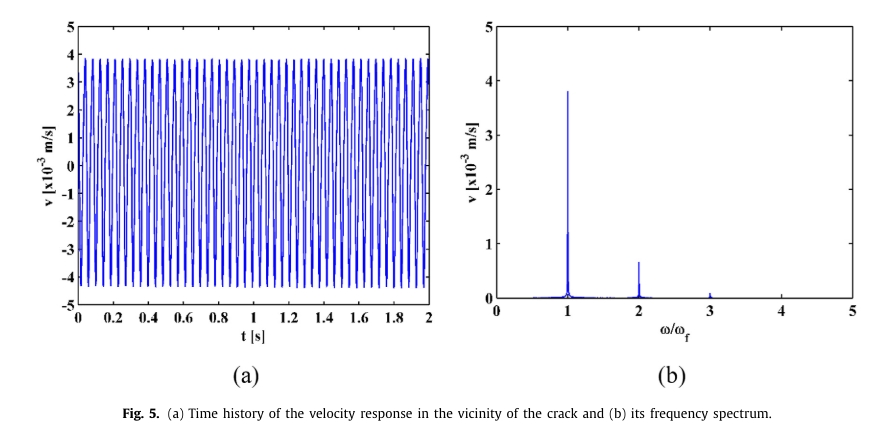Nonlinear pseudo-force in a breathing crack to generate harmonics
A fatigue crack that periodically opens and closes subject to a harmonic excitation can be referred to as a breathing crack. Higher harmonics generated by breathing cracks can manifest the occurrence of a crack. Although the modulation due to the opening–closing motion has been widely recognized as the cause of higher harmonics, the intrinsic force that drives a breathing crack to generate harmonics is not yet clear. With the objective of providing physical insights into the intrinsic force that generates harmonics, a novel concept of nonlinear pseudo-force (NPF) in the breathing crack is proposed in this study. The NPF is analytically formulated by rearranging the equation of transverse motion of a beam bearing a breathing crack, whose bending stiffness changes periodically during forced harmonic vibration. In a physical sense, the mechanism for generating higher harmonics is explicitly expounded using the NPF. In addition, the amplification effect of higher harmonics owing to differentiation is quantitatively investigated using multiple scenarios. The nonlinear behaviors of harmonics generated by breathing cracks are well explained using the NPF proposed in this study. A beam that bears a fatigue crack is taken as a specimen for experimental validation, whose steady-state velocity responses are acquired through noncontact vibration measurement. Finally, the application potential of the NPF for detecting and locating breathing cracks is explored. In particular, this study proposes a novel nonlinear approach for crack identification using the NPF, whose capability in detecting and locating breathing cracks is verified on beams with breathing cracks.


